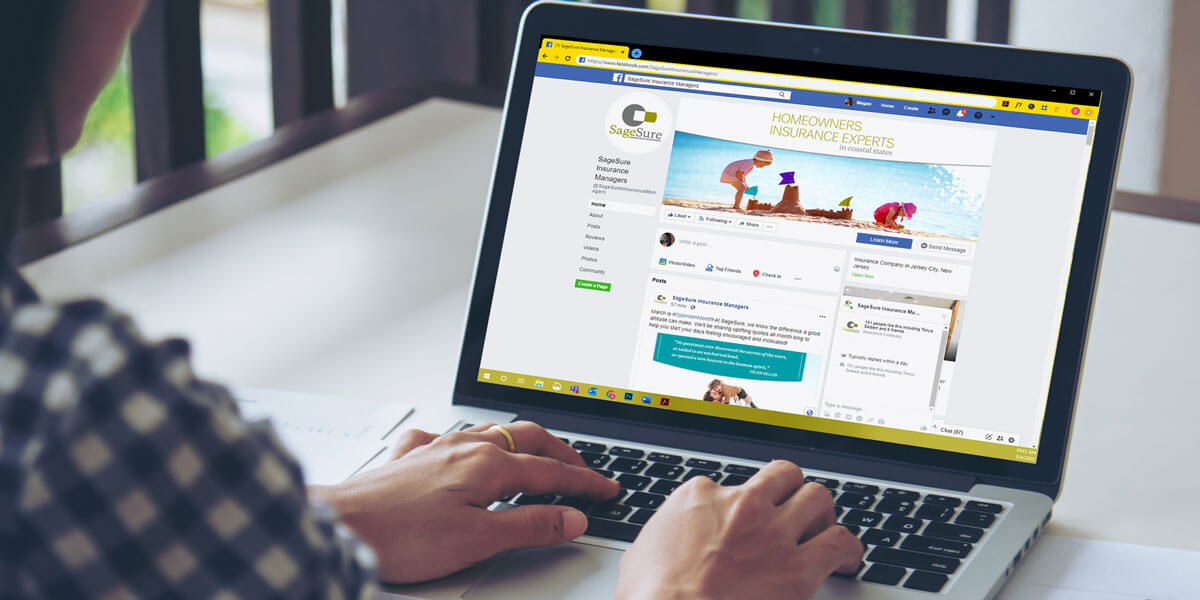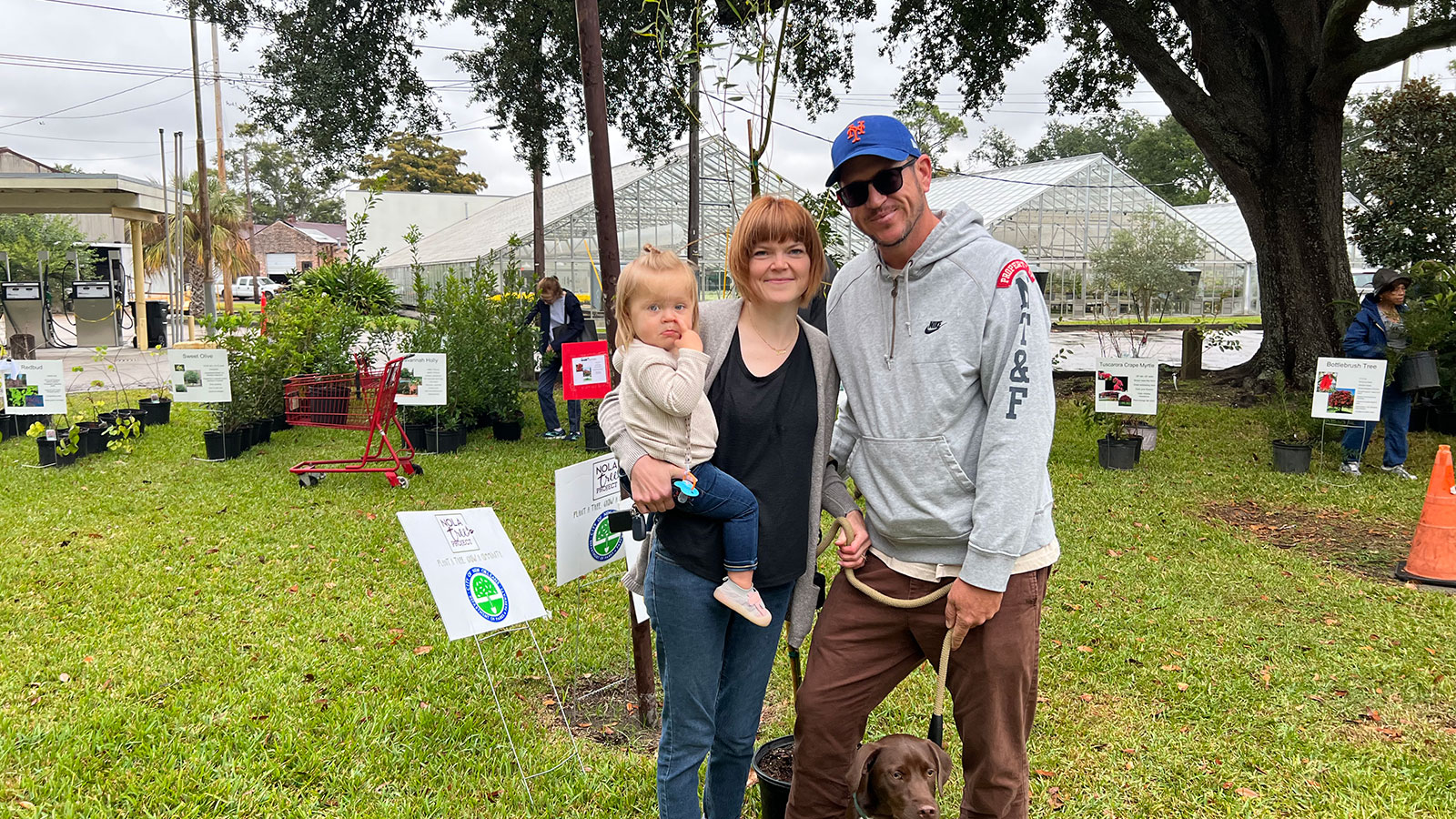
Eco-friendly giveback provides free trees to storm-damaged communities
SageSure supports sustainability efforts through a paperless initiative
December 14, 2022 — Social responsibility
More than 700 trees were provided to citizens of New Orleans free of charge on Saturday, November 12 through a partnership with the NOLA Tree Project, the Arbor Day Foundation’s Community Tree Recovery Program and SageSure.
Since September 2020, SageSure has contributed over $85,000 and sponsored three community tree giveaway events in Onalaska, Texas; Wilmington, North Carolina; and New Orleans, Louisiana, replacing more than 3,000 trees in areas devastated by storms. SageSure donates $1 to the Arbor Day Foundation’s Community Tree Recovery Program for every policyholder who chooses electronic delivery of their insurance documents.
“Standard homeowners insurance policies restore structures and belongings when hurricanes, tornados and other major storms damage property, but not loss to the tree canopy,” said Tammy Nelson, chief marketing officer at SageSure. “With this eco-friendly initiative, we’re helping reduce paper use, and, at the same time, helping rebuild communities and plant more trees.”
Sustainable partnerships like this would not be possible without SageSure’s network of more than 11,400 independent agents and strategic distribution alliances.
“I’ve been working with SageSure for about 15 years in insurance and property insurance and rebuilding people’s houses and SageSure has been a great partner,” said Stephen Lovecchio, branch owner of TWFG Insurance. “I think that this right here is just an extra step, quote-unquote, to putting more roots in the ground as we continue to grow. They are a major player and partner with New Orleans businesses and residents such as me.”
“It’s critical that we restore tree canopy that’s been damaged or destroyed, as green infrastructure plays a measurable role in the health of our communities,” said Dan Lambe, CEO of the Arbor Day Foundation. “Partners like SageSure help us continue the important work that the Arbor Day Foundation and our network of local planting partners do to keep urban forests thriving.”
Eco-friendly event draws a crowd
With motivations as varied as the individuals themselves, different reasons brought folks out to select the newest addition to their greenspace, but all were interested in this eco-friendly event. Despite rain and cooler temperatures in New Orleans, residents flocked to receive their free tree. Just an hour and a half into the event, 600 of the 700 available trees were distributed supporting the NOLA Tree Project mission to replace the 100,000 trees lost in Hurricane Katrina. After the giveaway, more than 68,000 trees will have been given to the residents of New Orleans, now also recovering from Hurricane Ida.
Some were replacing trees they lost during storms, and others recently purchased new homes on freshly cleared lots and were looking to enhance their space. Some wanted privacy, others were looking to enjoy the fruits their new tree will one day produce.
“I know exactly where I’m going to put it – right by my future chicken coop,” Kellen Kroll proclaimed. “I’m looking forward to having something else to care for. There was no yard at my last apartment.” Kellen selected a Redbud, which she says has edible flowers she hesitantly plucks from her neighbor’s tree and now will be able to enjoy guilt-free.
“When I saw the opportunity, I jumped at the chance,” said Dean Checkia, who selected a Magnolia for his property.
“I think I’m a hippie at heart,” Janice Walker revealed. “I love greenery and I love plants.”
Trees provide sustainable solutions in storm-stricken communities
Trees provide many benefits to their communities, but in coastal communities, where flooding is common, trees are even more vital. Trees prevent rain runoff and rising water levels, keep soil in place and soak up water. According to the U.S. Department of Agriculture Forest Service, a large tree can capture and retain as much as 332 gallons of water.1
Amy and Adam Underwood didn’t live in the area during Katrina but now reside near a flood wall breach where most of the houses and trees were wiped out. They’ve been coming to NOLA Tree Project events since they purchased their home six years ago to take advantage of this eco-friendly giveaway to restore the green space at the back of their property.
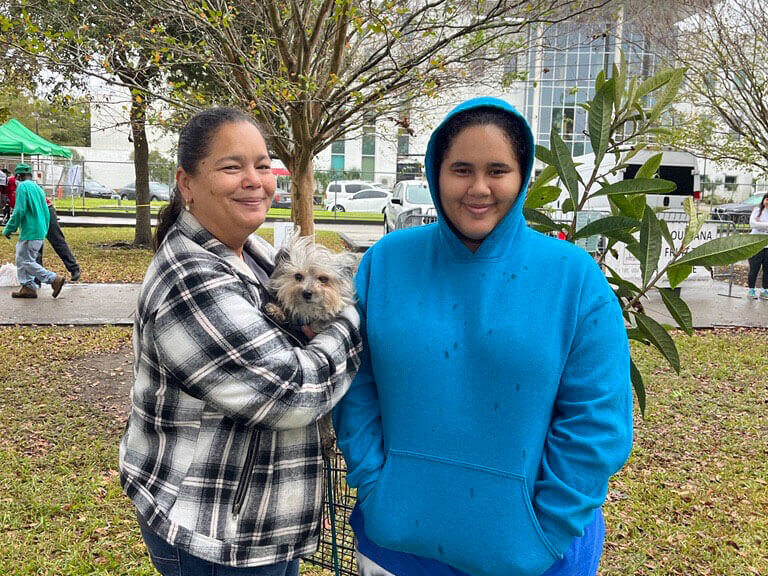
Teresa Pochè had no plans to attend the event; she didn’t even know it was going on right across from her recently purchased home. But her daughter Alyssa saw the crowds, turned to the internet, learned about the event and dragged her mom out. Alyssa, who attends New Harmony High, an environmental high school focused on coastal restoration, was beyond excited about the prospect of receiving a new tree to care for and cultivate. The two went back and forth between choosing an olive tree that Teresa wanted and the Satsuma tree that Alyssa was after. They ultimately settled on the Satsuma and its sweet native fruit.
Acting on sustainability is as simple as planting a tree
Arborists were available to answer questions about tree varieties, help individuals select the right tree for their location and learn more about planting and caring for their new plant.
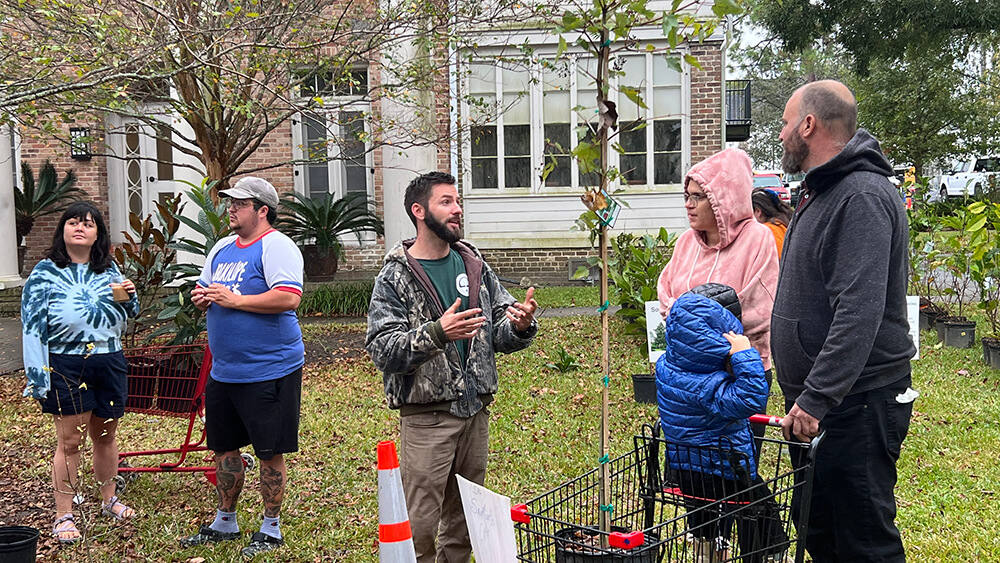
Brian Whited and his family took advantage of the knowledge of the city arborists to learn how to plant their new tree. Andrew Billon and William Craft were on hand from the New Orleans Department of Parks and Parkways Forestry Department with these simple tips for homeowners.
- Make a hole wide enough for the tree, double the size of the pot the tree is growing in. This allows the roots to have finer soil to grow through.
- Don’t make the hole deeper than the tree’s current pot to avoid covering too much of the stem.
- Cut through the bound roots. When plants remain in pots too long, the roots can grow in a circular pattern and become tangled. “Up to 20% of the roots can be disturbed without harming the tree,” Andrew said. This allows the roots to make their home in the new soil.
- Fill in the hole and deeply water the tree for the first three months to avoid letting the roots dry out.
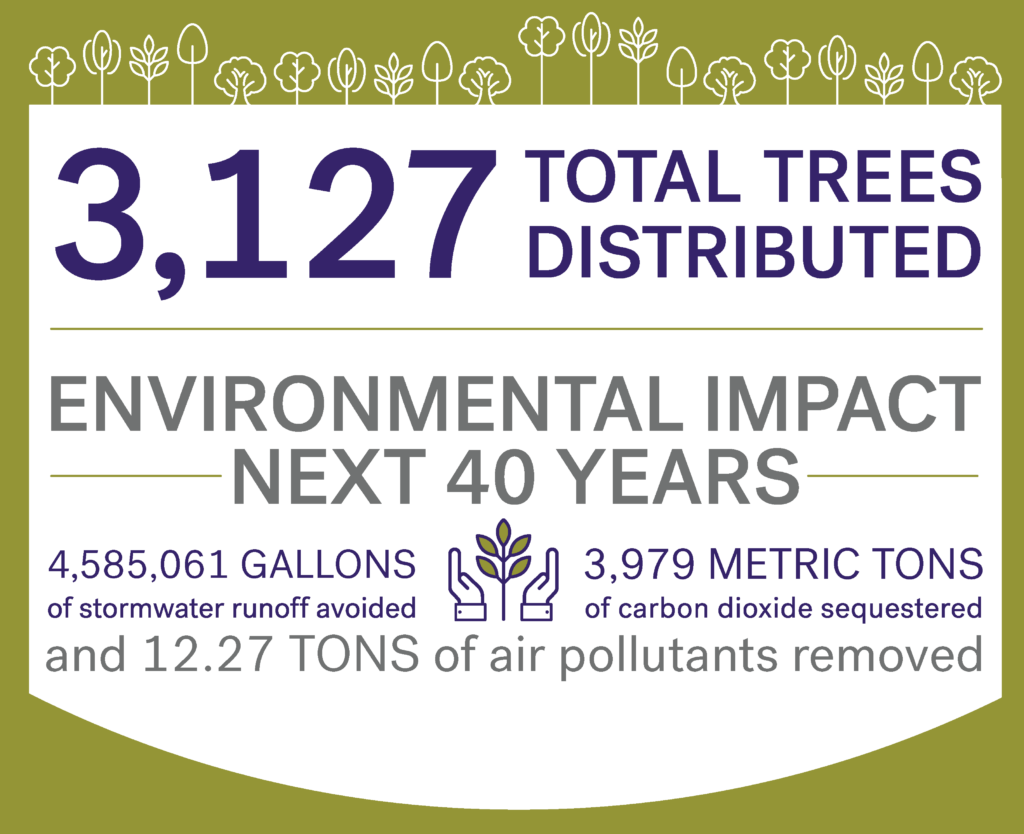
“It’s truly a win-win-win for everyone,” said Connie Uddo, director, NOLA Tree Project. “It’s a win for our organization as we get hundreds of trees out in a matter of hours. It’s a win for the residents as they get a free tree, and they go home so excited and enthusiastic about planting. It’s a win for our Louisiana growers because they get such great support from us. It’s a win for our sponsors, like SageSure, that did a great thing today sponsoring this event.”
There’s still time to have an impact. Policyholders who enroll to receive electronic documents through the end of this year will support a fourth tree distribution event this spring in another coastal state where SageSure provides coverage. If you’re a SageSure policyholder, log in to mysagesure.com and enroll.
Check your knowledge. Do you know what these environmental-friendly terms mean?
What is eco-friendly?
Eco-friendly refers to something that is not harmful to the environment or that tries to help the environment.1 Products or practices can be deemed eco-friendly. Products that don’t harm the earth are considered eco-friendly. Practices that contribute to conserving resources or assisting the earth are also eco-friendly. Planting trees is eco-friendly.
- https://dictionary.cambridge.org/us/dictionary/english/eco-friendly
How to be more eco-friendly
The internet is full of resources on how to be more eco-friendly, including everything from using renewable resources and reducing plastic consumption to recycling and composting. If you want to be more eco-friendly, start with small steps. Commit to bringing refillable water bottles when you’re on the go instead of buying plastic ones or remember to conserve energy by turning off lights when they aren’t in use. Small steps can make an impact. If you’re already doing these things, it may be time to graduate to bigger challenges, like saving for solar panels or investing in insulating your home.
Why is sustainability important?
Sustainability protects our environment and preserves natural resources for the generations that follow. Without a focus on sustainability, we damage our ecosystem and run the risk of depleting our fossil fuels, and risk animal extinction and damage to our atmosphere.
How to be more sustainable
Choosing eco-friendly products and making conscientious choices about how you live all contribute to a more sustainable lifestyle. Recycling, walking instead of driving, conserving energy and water, composting, switching to natural cleaning products and eliminating chemicals and toxins are all choices that would support a more sustainable life cycle; essentially, a thoughtful approach to using and conserving resources for future generations.
What is corporate social responsibility?
Corporate social responsibility, or CSR, is how a company measures and controls its impact on society. Companies with CSR initiatives focus on engaging in ways that enhance their communities and the environment. Corporate social responsibility considers the environment, ethics, philanthropy and economics. Charitable giving, employee volunteering events, and transparent and ethical practices can support corporate social responsibility programs.
- https://www.fs.usda.gov/inside-fs/delivering-mission/deliver/urban-forests-water-retention-infiltration-and-transpiration


